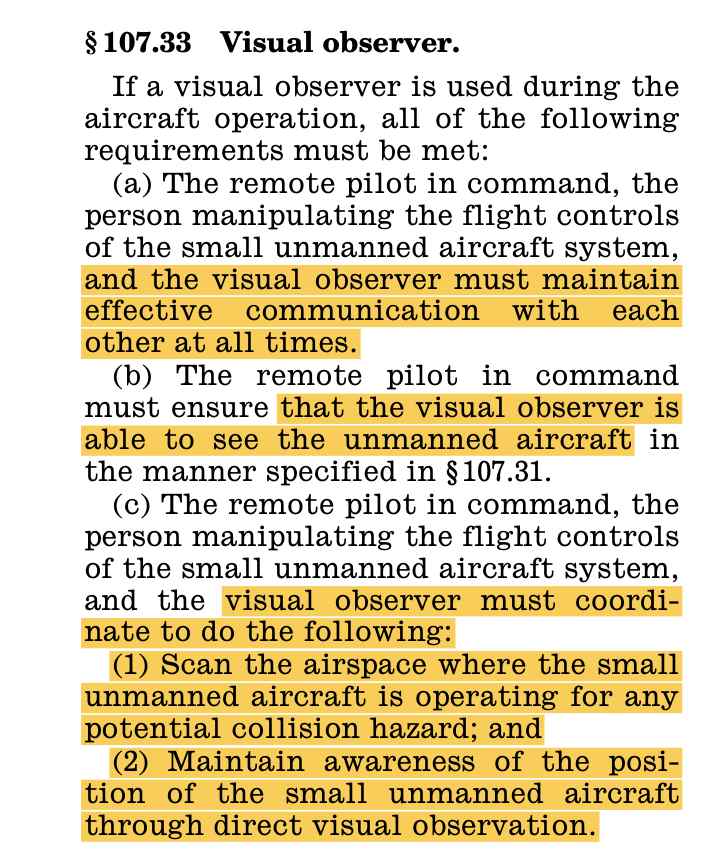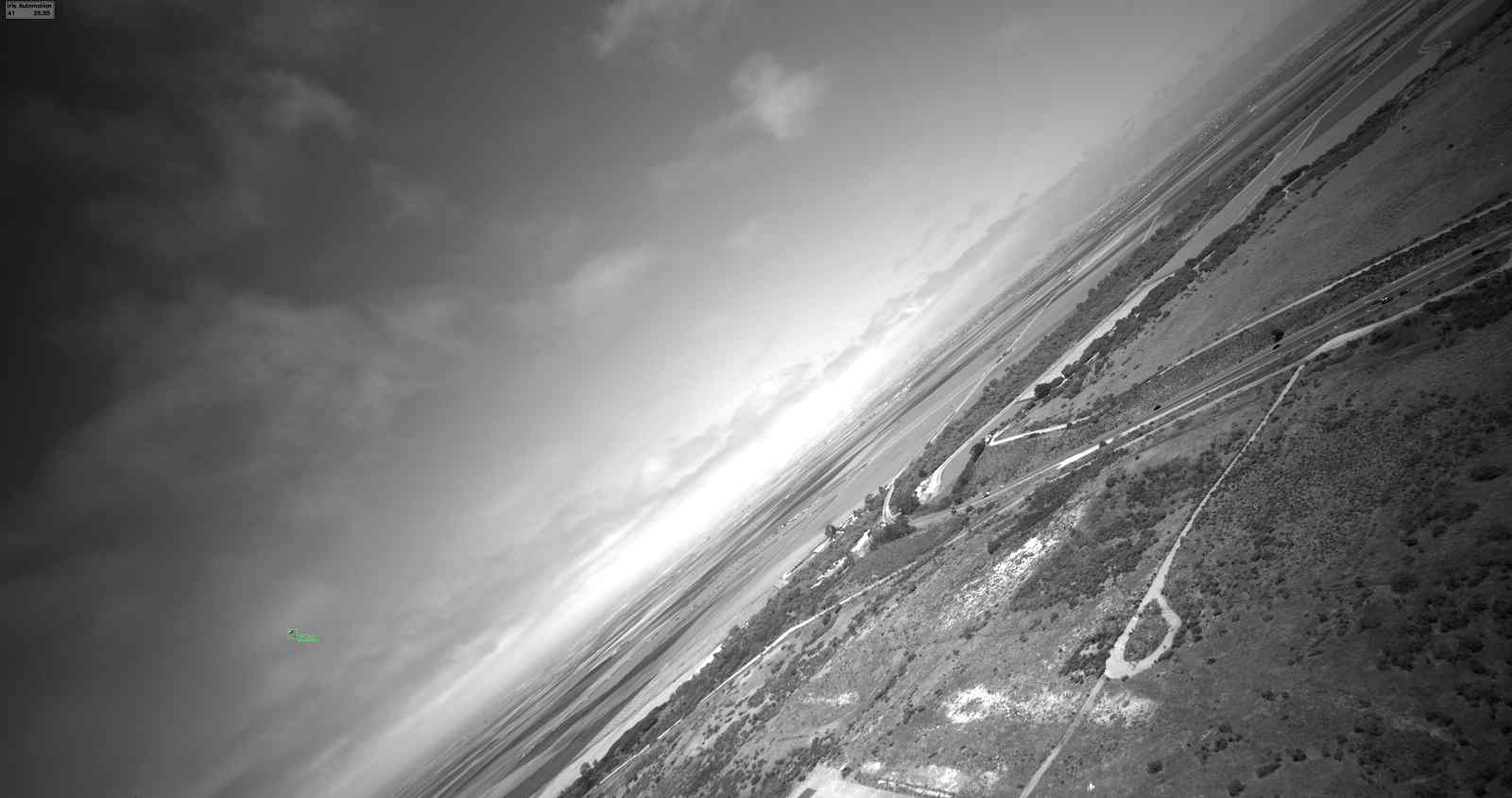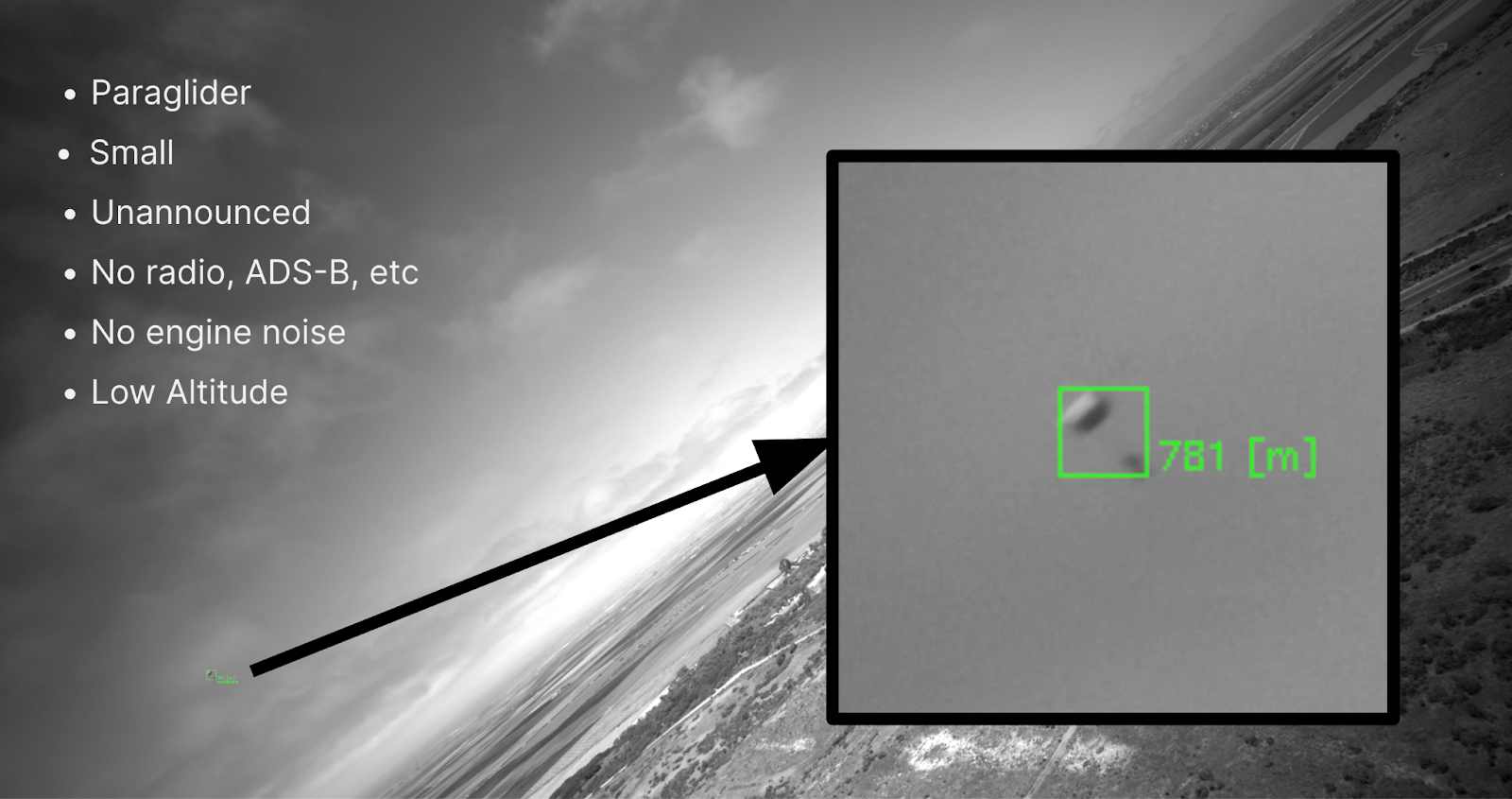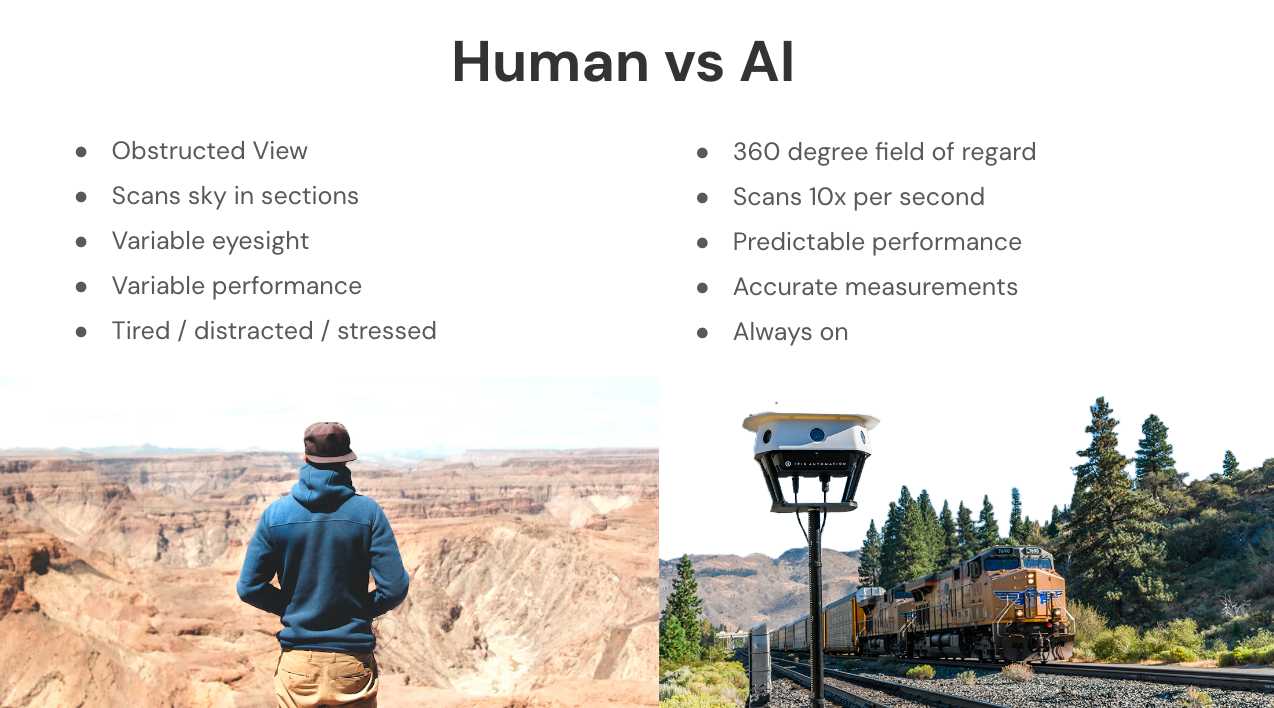Get Your Free Drone Autonomy Guide Today!

In the ever-evolving world of drone operations, one of the most significant challenges lies in safely navigating beyond the line of sight (BVLOS). Operating BVLOS opens up endless possibilities for industries, but it also brings a host of crucial considerations to the forefront. Flight safety and risk mitigation take utmost importance among these considerations, as the safety of people, property, and the uncrewed aircraft itself is paramount.
Currently, most BVLOS operations require the presence of a vigilant visual observer (VO) who diligently scans the skies for potential obstacles and hazards. If they come across one, they must immediately notify the remote pilot in command to abort the drone's current mission. Therefore, it goes without saying how dangerous any form of communication lapse can be.
During one of the NestGen’23 sessions, we spoke to Daniel O’Shea, Director of Global Sales and Customer Success at Iris Automation, a company dedicated to creating an aviation environment where no two aircraft ever collide mid-air. They leverage cutting-edge AI-based vision technology to reduce the risk of airborne collisions, which is critical for safe, scalable, and efficient operations in a variety of industries.
Table of Content:
- Role of Visual Observers in BVLOS Flights
- What is Detect & Avoid (DAA) System?
- Casia G: Iris Automation’s Ground-Based Detect and Alert System
- Benefits of Casia G for Autonomous BVLOS Drone-in-a-Box Operations
- Integration with FlytBase for Safe Remote Drone Operations
- BVLOS Approvals with Detect and Avoid Systems
- Way Ahead
Role of visual observers in BVLOS flights
Before delving into the specifics of the various types and Detect and Avoid (DAA) technologies available, we must first understand the role of visual observers and why they are required.
For example, the Federal Aviation Administration (FAA) in the United States specifies the operational requirements that must be met before flying unmanned aircraft systems. There is a requirement for a visual observer to perform the following roles for all drone operations that do not have a Part 107.33 waiver:

Source: https://www.govinfo.gov/content/pkg/CFR-2022-title14-vol2/pdf/CFR-2022-title14-vol2-sec107-31.pdf
Dan explains how this human-centric approach can be both resource-intensive and limited in terms of continuous monitoring. He illustrates with the following images:


There could be objects in the area of the drone operation, such as a small non-cooperative paraglider with no engine noise. It may be difficult for a human to accurately identify that and notify the remote pilot-in-command (PIC).
Dan also cites an Embry-Riddle Aeronautical University study titled – ‘Detecting and Assessing Collision Potential of Aircraft and Small Unmanned Aircraft Systems (sUAS) by Visual Observers’ which states that:
“During 26 of the intercepts, participants overestimated the available duration to the aircraft-sUAS intercept… This was a somewhat disturbing finding, as the visual observer tendency towards overestimating available response time may result in delayed evasive maneuvers or collision avoidance.
[A 2009 study] conclusively stated that visual observers were relatively poor at accurately estimating distance and altitude. This research further validates [that study’s] conclusion…. Small UAS operators should not rely on visual observers alone to provide distance separation judgements, as the data suggests that visual observer capacity to accurately estimate distance is exceedingly poor.”
Source: https://commons.erau.edu/ijaaa/vol4/iss4/4/
{{guide}}
Furthermore, as drone operations expand, just imagine the amount of resources and personnel that would be required to keep a constant eye on the sky. It is therefore critical to use newer technologies and innovations to conduct safe and efficient BVLOS operations that do not rely on human vision.
So, how do we address the challenge?
The solution, according to Dan, lies in AI-powered Detect & Avoid Technology.

So, What is Detect & Avoid (DAA) system?
Detect and avoid (DAA) system enables operators to sense and avoid other aircraft and obstacles autonomously. These systems use sensors, such as radar, acoustic, and visual, to detect and avoid obstacles in the airspace.
With DAA technology, drones can operate safely beyond visual line of sight, expanding their range of capabilities and applications.
Cooperative & non-cooperative aircrafts
A number of DAA systems available in the market only support cooperative aircrafts. Cooperative systems include aircrafts whose real-time location and trajectory are available and known and can be displayed. Integrating cooperative systems into your concept of operations (Conop) is advantageous and strengthens your overall safety case.
Having an A-DSB receiver to display cooperative traffic is a positive step that doesn't hinder safety. However, when conducting operations at higher altitudes and over long distances, reliance solely on cooperative detection may not provide comprehensive coverage.
Non-cooperative flights, which lack such systems, pose a challenge.
Dan points out, “The exact percentage of non-cooperative flights in various airspaces is difficult to ascertain, varying between countries and regions. While some estimates suggest around 15% non-cooperative flights in the US airspace, this figure can fluctuate significantly depending on the location, and certain rural areas may have a higher prevalence of non-cooperative aircraft. This underscores the critical need for effective sense and avoid technology specifically geared towards non-cooperative detection.”
Types of DAA systems

Radar: One of the most well-known types of sense and avoid technology is radar. Radar systems emit radio waves that bounce off objects in the environment and return to the radar receiver. Detect and avoid radar systems can operate in all weather conditions. However, it has challenges such as expensive equipment, challenged by particulates and low altitude clutter, high power requirements, and additional regulatory approvals.
Acoustic: These systems use microphones to detect the sound of other aircraft. This type of system can detect aircraft from up to 10 kilometers away, making it an effective option for long-range detection. Acoustic systems are also all-weather capable and have low power requirements. However, they can struggle with positional accuracy and may not be able to distinguish between incoming and outgoing aircraft.
Optical: These systems use cameras and other sensors to detect other aircraft visually. These systems are passive, meaning they do not emit any signals that could potentially interfere with other equipment. Optical systems offer high precision and can easily distinguish between different types of aircraft. However, they are limited by weather conditions and require a certain level of light to function effectively. Optical systems also have limited detection range compared to radar.
Enter Casia G: Iris Automation’s ground based detect and alert system
Based on optical vision, Casia G is a ground-based surveillance system from Iris Automation to continuously monitor airspace and ensure UAS operations are safe from intruder aircraft. The sensors employ Iris' patented AI and computer vision technology to provide a full optical, 360° field of view for detecting and alerting to any cooperative or non-cooperative aircraft within a 2 km radius of the sensor's location. Their system:
- Sanitizes airspace for UAS operational environment
- Has the ability to extend for unlimited range using multiple nodes
- Does not get bored, tired or distracted like human visual observers (VOs)
- Reserves UAS power and payload
How is this system beneficial for autonomous BVLOS drone-in-a-box operations
Ground based Detect and Avoid (DAA) drone systems such as the Casia G are garnering significant interest due to their simplicity and ability to preserve the Size, Weight, and Power (SWAP) of the aircraft. They do not require complex integration into the flight control system and provide the necessary airspace visualization. Casia G’s monitoring range can also be expanded by adding additional units to form a network of detection nodes and a mesh.
These systems could be easily placed alongside Drone-in-a-Box (DIAB) solutions in the most remote locations, allowing autonomous repetitive operations within a controlled airspace while avoiding collisions.

Integration with FlytBase for safe remote drone operations
FlytBase is an enterprise software platform that facilitates fully automated Beyond Visual Line of Sight (BVLOS) operations using drone-in-a-box systems from remote command centers.
By integrating with the Casia G system, the FlytBase dashboard provides real-time data on intrusive aircraft, including type, live telemetry, and location on the map. Remote drone operators can monitor the status and radius of the Casia G sensor and receive immediate alerts if unauthorized aircraft are detected within their operating area.

Ensuring safe BVLOS flights, FlytBase offers various safety features, including fail-safe configurations for emergencies like RC link-loss, low battery, or internet connection issues. In such events, the drone autonomously returns to the docking station. Moreover, operators can create No-Fly-Zones (NFZ) to prevent drone entry into restricted airspace, enhancing overall flight safety and compliance
Read more: https://dronedj.com/2022/11/14/flytbase-bvlos-drone-iris-automation/
BVLOS Approvals with Detect and Avoid Systems
The FAA has introduced a smart approach by incorporating "shielding" into their waivers, acknowledging that flying within 50 feet of the ground or a structure is likely safer for other aircraft. To achieve true BVLOS flights, the FAA requires some form of detect and avoid system, whether cooperative or non-cooperative, integrated into the operations.
While some companies have obtained waivers to fly as high as 1,000 feet AGL, the 50-feet limitation can be restrictive and potentially hazardous for certain operations. The key goal of incorporating a DAA system is to surpass the 50-feet boundary, as some customers have already done with technology like ours.
This concept applies not only to the FAA but also to other regulators such as Transport Canada and EASA. Currently, several waivers are being issued that set a new standard for the use of Detect and Avoid systems and strategies under FAA regulations 107.31.
It is also necessary to describe the mitigations that will be used in the event of a loss of detect and avoid capability. This may involve having redundant systems in place or having a clear plan for how the UAV will avoid obstacles and other aircraft in the event of a loss of detect and avoid. It is important to work with regulators to ensure that the proposed mitigations are acceptable and that they will provide an adequate level of safety.
Recently, Aerodyne, a leading drone enterprise solution provider, has successfully obtained a waiver under FAA Part 107.31 with the help of Casia G detect and avoid system and FlytBase platform to conduct drone operations at P&G's manufacturing plant in Lima, Ohio, without the use of visual observers.
.jpeg)
Way ahead
While human visual observers remain important, technological solutions offer scalability and significant advantages. These solutions should be seen as tactical mitigation measures complementing other safety protocols. Cameras, sensors, and advanced safety technologies provide higher accuracy, continuous monitoring, and real-time responses, enhancing the safety of drone operations and opening doors to more advanced applications in the future.
Continued innovation and advancement in DAA technology are going to be essential for handling complex situations effectively and mitigating risks and safely integrating drones into the world’s third dimension.
FAQs
Find quick answers to common questions about compatibility, setup, features, and pricing




.webp)
.svg)
.webp)



